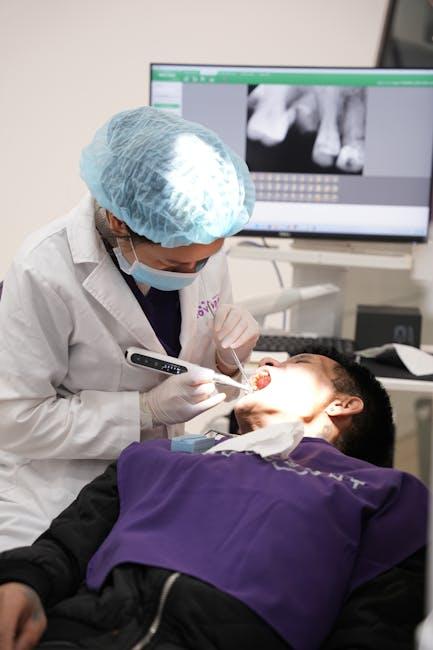
The Barriers to Oral Health Care Illustration – Centers for Medicare & Medicaid Services | CMS (.gov)
Oral health is an essential component of overall well-being, yet millions of Americans face numerous barriers to accessing quality dental care. The Centers for Medicare & Medicaid Services (CMS) provide valuable insights into these challenges through their comprehensive illustration of barriers to oral health care. This article delves into these barriers, exploring their impact, and providing practical tips to overcome them while highlighting the importance of policy initiatives like Medicare and Medicaid coverage expansion.
Understanding Barriers to Oral Health Care
Barriers to oral health care refer to any obstacles that prevent individuals from receiving timely, affordable, and quality dental services. CMS has spotlighted these issues to improve awareness and drive policy decisions that enhance oral health equity across the United States.
Common Barriers Illustrated by CMS
- Financial Barriers: High out-of-pocket costs or lack of dental insurance prevent many from seeking care.
- Geographic Barriers: Limited availability of dental providers in rural or underserved urban areas makes access difficult.
- Awareness and Education: Lack of knowledge about the importance of oral health and available services contributes to low care utilization.
- Transportation and Mobility: Difficulty traveling to dental appointments affects seniors, people with disabilities, and low-income populations.
- Cultural and Language Barriers: Miscommunication and lack of culturally competent care can discourage diverse populations from seeking help.
- Systemic and Insurance Limitations: Restrictions in Medicare and Medicaid dental benefits reduce coverage for many beneficiaries.
The Impact of Dental Care Barriers on Public Health
When oral health care is neglected due to these barriers, the effects ripple beyond teeth and gums. Untreated dental issues can lead to severe pain, infections, nutritional problems, and even worsened chronic health conditions like diabetes and heart disease.
Moreover, disparities in oral health access contribute to broader social inequalities, disproportionately affecting low-income families, minority groups, older adults, and people with disabilities.
Oral Health Disparities According to CMS
| Population Group | Barrier Type | Consequence |
|---|---|---|
| Low-income Families | Financial & Insurance Limitations | High rates of untreated cavities and tooth loss |
| Rural Residents | Geographic & Transportation Barriers | Delayed or no dental visits, increased emergency visits |
| Older Adults | Medicare Coverage Gaps & Mobility Issues | Unaddressed oral infections and pain, decreased quality of life |
| Minority Communities | Cultural & Language Barriers | Lower preventive care utilization and worse oral health outcomes |
Benefits of Addressing Oral Health Care Barriers
Efforts to remove obstacles to oral health care can have far-reaching benefits, including:
- Improved Overall Health: Early detection and treatment of oral diseases prevent complications affecting other body systems.
- Reduced Health Care Costs: Preventive services and timely interventions lower emergency visits and complicated procedures.
- Enhanced Quality of Life: Better oral health improves nutrition, communication, self-esteem, and social participation.
- Health Equity: Reducing disparities promotes fairness and access for underserved and vulnerable populations.
Practical Tips to Overcome Barriers to Oral Health Care
Whether you’re a patient, caregiver, or healthcare provider, recognizing and addressing barriers helps improve access to dental care. Here are actionable strategies:
- Explore Eligibility for Medicaid and Medicare Dental Benefits: Review your state’s Medicaid dental coverage and ask about supplementary Medicare plans that include oral health.
- Utilize Community Health Centers: Federally qualified health centers (FQHCs) often offer affordable or sliding-scale dental services in underserved areas.
- Promote Oral Health Education: Learn and share information about the importance of regular dental check-ups and oral hygiene practices.
- Seek Transportation Assistance: Programs like Medicaid Non-Emergency Medical Transportation (NEMT) can help patients travel to appointments.
- Cultural Competency: Advocate for or select dental providers sensitive to your language and cultural needs.
- Leverage Tele-dentistry: Use virtual consultations for preliminary assessments or follow-ups when in-person visits are challenging.
Case Study: Medicare Expansion and Oral Health Access
In recent years, several states have piloted expanded Medicaid dental benefits for adults, including enhanced coverage for preventive and restorative services. According to CMS reports, these expansions have markedly improved patient outcomes by:
- Increasing dental visit rates by 30% among low-income adults
- Reducing emergency room visits for dental-related pain by 18%
- Improving patient satisfaction and oral health literacy
This illustrates how policy-level changes can effectively reduce access barriers and promote oral health equity.
First-Hand Experience: Overcoming Oral Health Care Barriers
Jane, a 68-year-old Medicare beneficiary in a rural area, struggled to find affordable dental care due to Medicare’s limited dental coverage and lack of local providers. After learning about community health centers offering dental clinics and the Medicaid transportation program, Jane was able to schedule regular appointments and receive preventive care. This experience not only relieved her chronic tooth pain but also improved her confidence and ability to eat healthfully.
Conclusion
The Barriers to Oral Health Care Illustration by the Centers for Medicare & Medicaid Services sheds light on the multifaceted challenges preventing many Americans from achieving optimal oral health. By understanding these barriers—financial, geographic, educational, systemic, and cultural—we can work collectively to promote policies and community efforts that increase access to dental services. Practical steps such as utilizing Medicaid and Medicare resources, supporting community clinics, embracing tele-dentistry, and promoting oral health education play critical roles in overcoming these obstacles.
Improving oral health access is not only vital for individual wellness but also essential for reducing healthcare costs and advancing health equity nationwide. Stay informed, advocate for expanded coverage, and take proactive steps towards better oral health for you and your community.


